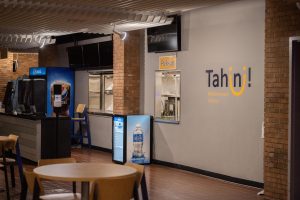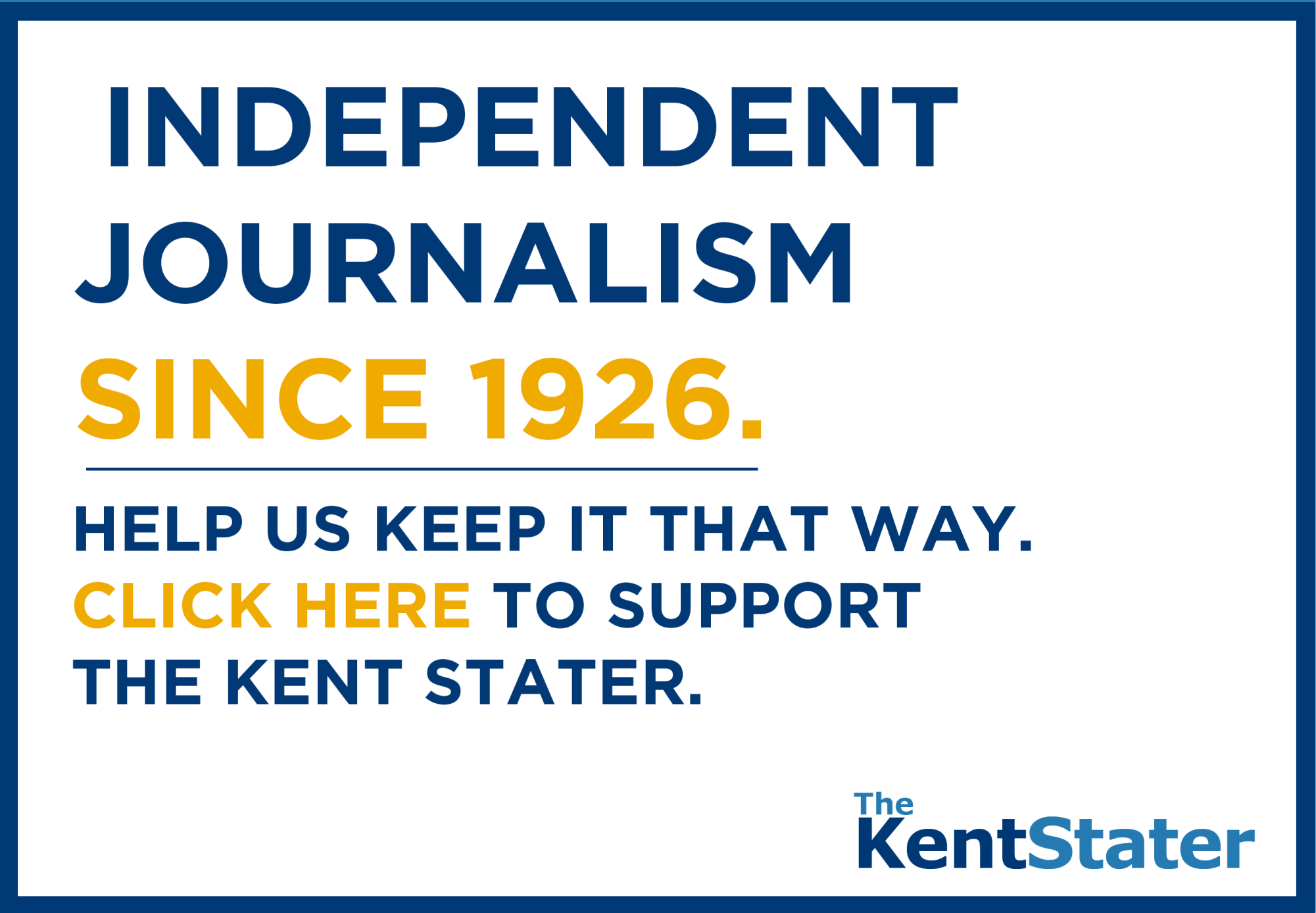Study leads to $11M East Summit Street improvement plan
April 28, 2008
Kent State will pay $1.1M toward new roadway changes
Bumper to bumper, cars inch forward from the Student Recreation and Wellness Center to in front of the Student Center. Slowly, they make their way up the hill past Satterfield Hall, then finally, 15 minutes later, down the other side past Terrace Drive.
But a break in traffic might be in the near future.
Last week, the Board of Trustees approved a deal between the university and the city to each pay $1.1 million of an $11 million improvement for the road. The other $8.8 million will come from state and federal transportation grants.
Thomas Clapper, general manager of Kent State Transportation Services, said proposed improvements include changing the roadway to include islands such as those near the Wendy’s to Burger King strip of state Route 59. It also will include better traffic lights, better pedestrian crosswalk and more turning lanes. Also planned is a roundabout, a traffic-slowing circle near the stop sign by the ice arena.
The plan comes just a few weeks after a study about traffic issues on Summit Street by Clapper and professor of geography David Kaplan was published in Planning for Higher Education.
The study, “Traffic Congestion on a University Campus: A Consideration of Unconventional Remedies to Nontraditional Transportation Patterns,” is three years in the making and examines how traffic conditions in a university setting differ from those in a non-university setting.
The study also discusses solutions, including a better wayfinding system, or road signs, to the congestion issues plaguing Summit Street and the university as a whole.
Clapper said traffic around the university and on Summit Street specifically, has been increasing significantly since the ’80s.
“Somewhere in the mid-’80s, the problem became pretty apparent and getting progressively worse to the point where we were having problems getting safety vehicles through,” Clapper said.
Clapper said according to the data collected, in the period right after spring graduation there were 6,000 to 7,000 cars a day on Summit Street, most of which were non-university related. But in fall, they reported 19,000 to 20,000 cars on Summit Street daily, most going in and out of campus.
“That confirmed what we believed that the traffic congestion was a direct result of the university, in that traffic was being attracted (to Summit Street) because that’s where they built the parking lots,” Clapper said. “Over the years, the university added tons of parking along Summit Street with no consideration of the traffic impact that was happening.”
New ways to travel
One way the university wants to cut traffic is to offer other ways to get to campus.
“As far as a lot of campuses are concerned, Kent State has a really, really high proportion of people who take cars,” Kaplan said .
He said that even though many people live nearby, only about 6 percent actually use bikes, and fewer than 40 percent walk. Kaplan also said the low percentage biking is because of weather, not enough time, inconvenience, lack of walkways and busy streets.
“A lot of the fault actually lies with the campus and with the city because they make it hard,” Kaplan said. “Even students who are willing to walk or bike find it scary.”
To Clapper, the system needs to change.
“Although we have sidewalks, we don’t have enough sidewalks,” Clapper said. “Although we do have some pedestrian crossing signs, we don’t have enough. Although we do have traffic lights, the lighting is insufficient.”
Kaplan said most people driving simply don’t know where they’re going.
“A lot of times, the traffic on Summit Street just doesn’t have to be there,” he said, adding State Route 59 and State Route 261 are largely underused.
Finding the way
One solution for this is to implement better wayfinding, which means the signs, maps and other ways people get around.
“The wayfinding system is a way to try to get traffic that’s coming into Kent State and try to move it away from Summit Street and other congested corridors and towards places which have a good amount of capacity that is underutilized,” Kaplan said. “Wayfinding actually diverts traffic from one place to another, essentially, by giving people better directions.”
David Middleton, associate professor of visual communication design, teaches a special topics course in university wayfinding. In 2007, Middleton, urban planners from all over the country, the Society for Environmental Graphic Design and students conducted a wayfinding research report examining the current system and testing solutions.
He said one reason people drive to campus is they have no idea how close it actually is and how much quicker it would be to walk.
“The current maps don’t even have paths on them,” Middleton. “It’s all about the paths, and people knowing that there’s paths.”
Middleton said that better signs lead to increased comfort levels. If people feel comfortable, they will be more likely to walk or bike and not drive.
“I think it reinforces your sense of security when you know exactly where you’re going,” he said.
Clapper and Kaplan’s study also says that a better wayfinding system would pull traffic away from Summit Street and to more less-traveled areas.
Contact School of Art and VCD reporter Leslie Cusano at [email protected].












